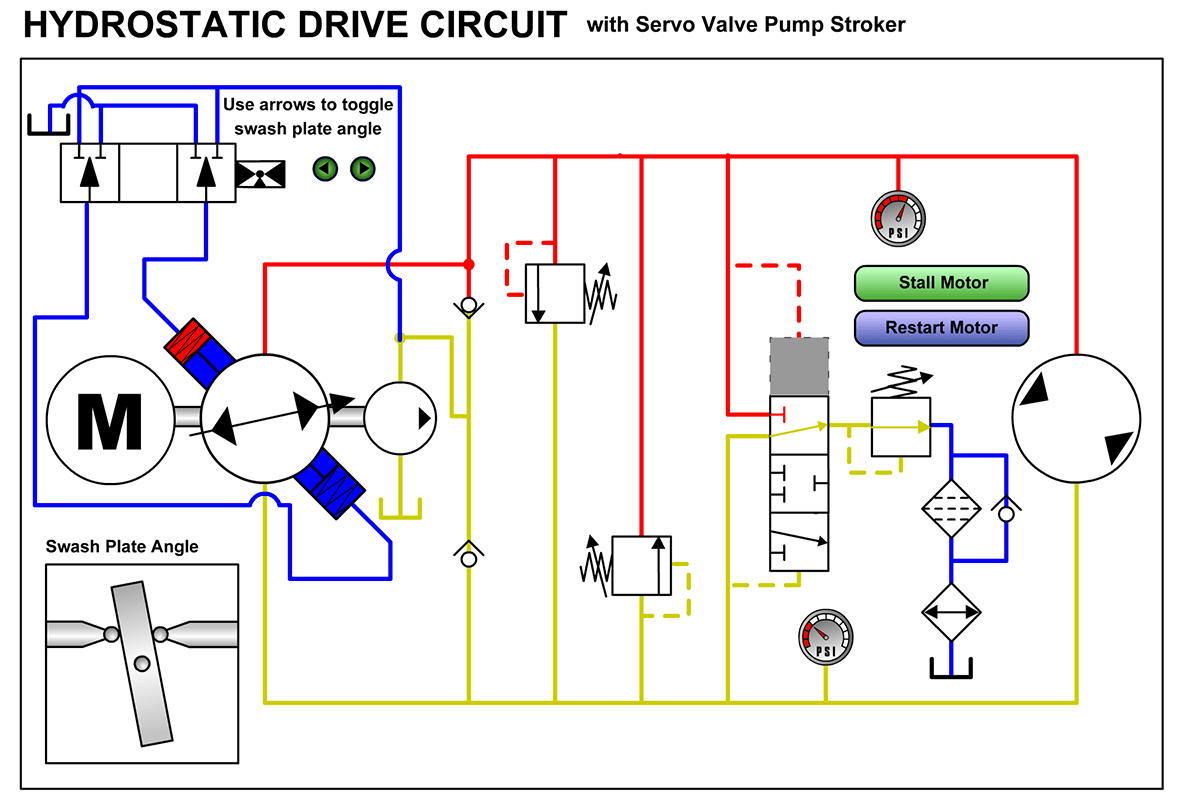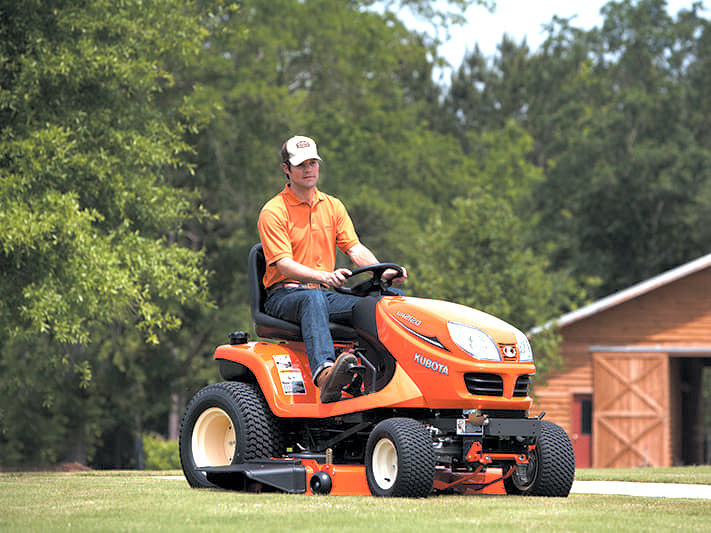Troubleshooting a hydrostatic transmission involves checking fluid levels, belt tension, and filter condition. Address leaks, strange noises, or poor response swiftly for optimal function.
Hydrostatic transmissions are essential for smooth operation in many types of machinery, such as lawn tractors and some industrial equipment. They rely on fluid dynamics to transfer power from the engine to the wheels or other working parts. A well-functioning hydrostatic transmission ensures seamless speed changes and efficient power distribution.
When issues arise, prompt troubleshooting can prevent extensive damage and costly repairs. Regular maintenance is key to the longevity and reliability of your machine’s transmission system. Understanding common problems and their signs is crucial for operators and technicians alike. With a strategic approach to diagnosing and fixing issues, you can keep your equipment running smoothly and avoid operational downtime.

Credit: www.machinerylubrication.com
Introduction To Hydrostatic Transmission Systems
Hydrostatic transmission (HST) systems are a key component in modern machinery. They use fluids to transfer power. This system offers smooth and adjustable power delivery. HST systems are vital for equipment that requires variable speed control. They are reliable and efficient in power distribution. Let’s dive deeper into their role and common applications.
The Role In Machinery
Hydrostatic transmissions play a crucial role in machinery. They provide precise control of speed and torque. This happens without the need for gears or clutches. They work well under varying loads. This makes them ideal for machines that need a wide range of speeds. They offer a seamless transition from standstill to full speed.
Common Applications
- Construction equipment: like excavators and loaders.
- Agricultural machinery: such as tractors and combine harvesters.
- Lawn care: including riding mowers and garden tractors.
- Material handling: like forklifts and conveyor systems.
- Forestry: in machines like feller bunchers and skidders.
These systems provide easy control and efficient power in various industries. They adapt to many work environments. They are a top choice for heavy-duty tasks.

Credit: www.cdiginc.com
Symptoms Of Hydrostatic Transmission Issues
Identifying problems with hydrostatic transmissions early can save time and money. Look for these symptoms:
Loss Of Power
A hydrostatic transmission that’s failing often loses power. The mower may move slowly or not at all. This can happen suddenly or gradually. Signs include:
- Engine runs, but the mower won’t move.
- Reduced speed despite full throttle.
- Sudden stops during use.
Strange Noises
Unusual sounds can signal an issue. These might be:
- Whining or grinding during operation.
- Clicking sounds when starting to move.
- Loud noises under load.
Fluid Leaks
Visible leaks are clear indicators of trouble. Check for:
- Wet spots under the machine.
- Oil levels dropping quickly.
- Drips around seals and hose connections.
Regular maintenance helps prevent these issues. Spot them early for an easier fix.
Initial Diagnostic Steps
Hydrostatic transmission systems power many types of machinery. Proper troubleshooting ensures peak performance and longevity. Initial diagnostic steps are crucial for identifying issues. Follow these steps to diagnose common problems.
Checking The Fluid Level
Low or dirty fluid can cause transmission failure. Ensure optimal operation with regular checks.
- Turn off the engine and wait for cool down.
- Locate the transmission fluid reservoir.
- Check the fluid level against the recommended mark.
- Top up with the correct type of fluid if needed.
Inspecting The Drive Belt
A worn or damaged drive belt affects transmission efficiency. Inspect regularly to prevent unexpected downtime.
- Access the drive belt compartment.
- Examine the belt for wear and tear.
- Look for signs of fraying or cracking.
- Replace the belt if defects are found.
Quick Fixes You Can Do
When your hydrostatic transmission acts up, don’t panic. Simple DIY fixes often solve common issues. Even with limited mechanical skills, you can tackle these tasks. These quick fixes can save time and money.
Topping Off Hydraulic Fluid
Low fluid levels cause poor performance. Check the reservoir first. Unscrew the cap on the hydraulic tank. Use a clean funnel to avoid contamination. Pour the manufacturer-recommended fluid slowly. Don’t overfill; this could cause damage.
Steps to top off:- Locate the fluid reservoir.
- Remove the cap.
- Insert funnel.
- Add fluid to the correct level.
- Replace the cap securely.
Belt Tension Adjustments
Slipping belts reduce transmission efficiency. Find the belt tensioner. It’s usually near the engine or drive pulleys. Turn the tensioner bolt to adjust. Check the manual for proper tension. Tighten the bolt to secure the setting.
Adjustment guide:- Locate the tensioner.
- Adjust bolt for tension.
- Refer to the manual for specifics.
- Test tension with a finger.
- Lock the tensioner in place.
Purge The Transmission System
Air in the system causes jerky movement. Purging removes trapped air. Start the engine and disengage the transmission. Move the control levers forward and backward. Repeat several times. Check the operation afterward.
Purging steps:- Start the engine.
- Disengage transmission.
- Move levers to release air.
- Do this multiple times.
- Test the drive.
Common Failures And Solutions
Hydrostatic transmission systems are vital in many machines. They provide smooth and precise power delivery. But, like any system, they can face issues. Understanding common failures and their solutions is key to quick fixes. Let’s dive into some typical problems and their troubleshooting tips.
Clogged Filter Replacement
A clogged filter can hinder transmission performance. It restricts fluid flow, leading to overheating and power loss. Check the filter regularly. Replace it if it’s dirty or after a set number of hours.
- Turn off the machine.
- Locate the filter.
- Remove the old filter.
- Install a new one.
- Restart the system.
Bypass Valve Issues
A faulty bypass valve can affect the transmission. It can cause the machine to move slowly or not at all. The valve may be stuck open or closed. Inspect it and clean or replace as needed.
| Sign | Solution |
|---|---|
| Machine moves slowly | Clean or replace valve |
| Machine won’t move | Check valve position |
Charge Pump Problems
A charge pump keeps the transmission pressurized. If it fails, the machine may not drive correctly. Listen for unusual noises and check for leaks. A drop in pressure often indicates a problem.
- Listen for noise from the pump.
- Inspect for leaks.
- Check pressure levels.
- Repair or replace the pump.
When To Seek Professional Help
Hydrostatic transmissions are reliable but may need expert attention.
Professional help is vital when facing complex issues.
Complex Internal Issues
Hydrostatic transmissions involve intricate mechanisms. Signs you need a pro include:
- Erratic movement or loss of power
- Strange noises during operation
- Fluid leaks beneath the machine
- Transmission overheats regularly
These symptoms suggest internal problems that DIY fixes can’t solve.
Warranty Considerations
Check your warranty before you act. Some facts:
| Warranty Status | Action |
|---|---|
| Active | Contact the manufacturer or dealer |
| Expired | Seek a certified technician |
Warranty terms can dictate the right step.
Preventive Maintenance Tips
To keep a hydrostatic transmission running smoothly, preventive maintenance is key. This guide offers tips to prevent problems before they start. Let’s dive in!
Regular Fluid Checks
Checking the fluid in your hydrostatic transmission is crucial. It ensures your system runs well. Do this often to catch issues early.
- Check the fluid level every 50 hours of use.
- Look for signs of dirty or contaminated fluid.
- Change the fluid according to the manufacturer’s schedule.
Use the right type of fluid. Your manual will tell you which one.
Proper Storage Practices
How you store your equipment affects its health. Follow these tips:
- Keep your equipment in a dry, clean space.
- Avoid extreme temperatures.
- Cover your equipment to protect it from dust and moisture.
Proper storage keeps your transmission safe from damage and wear.
Upgrading Your Hydrostatic Transmission
A hydrostatic transmission plays a crucial role in powering your machinery. Over time, you might face issues with performance. An upgrade can bring new life to your equipment. Let’s explore when an upgrade is a smart choice and the options available for enhanced performance.
When To Consider An Upgrade
- Decreased efficiency: Your machine takes longer to respond.
- Frequent repairs: Breakdowns are becoming more common.
- Improved technology: Newer models offer better features.
- Heavy-duty tasks: Your current system can’t handle the load.
Options For Enhanced Performance
Selecting the right upgrade for your hydrostatic transmission ensures top performance. Consider these options:
| Upgrade Type | Benefits |
|---|---|
| Variable displacement pumps | Boosts efficiency and control. |
| High-performance fluids | Enhances operation in extreme temperatures. |
| Electronic controls | Improves precision and response time. |
| Cooling systems | Prevents overheating and extends life. |

Credit: nelsontractorco.com
Frequently Asked Questions
What Is The Common Problem With Hydrostatic Transmission?
A common problem with hydrostatic transmission is overheating, which can lead to efficiency loss and potential failure.
Why Does My Hydrostatic Transmission Won’t Move?
A hydrostatic transmission might not move due to low fluid levels, air in the system, or a faulty drive belt. Checking and maintaining fluid levels, bleeding air from the system, and inspecting the drive belt for wear can help resolve this issue.
How Do You Purge Air From A Hydrostatic Transmission?
To purge air from a hydrostatic transmission, engage the bypass lever, start the engine, and slowly move the drive control back and forth several times. Then, disengage the bypass lever, start the engine again, and test drive. Repeat if necessary to remove all air pockets.
How Do I Know If My Riding Lawn Mower Transmission Is Bad?
Signs of a bad riding lawn mower transmission include difficulty in shifting gears, strange noises during operation, and the mower moving erratically or not at all.
What Causes Hydrostatic Transmission Failure?
Common reasons include low hydraulic fluid levels, air in the system, or worn-out components. Regular maintenance can prevent most issues.
Conclusion
Navigating the complexities of hydrostatic transmission troubleshooting can be daunting. Yet, with the right knowledge and tools, overcoming these challenges is achievable. Remember, regular maintenance and understanding common issues are key. Armed with this guide, you’re now better equipped to address any problems that arise, ensuring your machinery operates smoothly and efficiently.

















